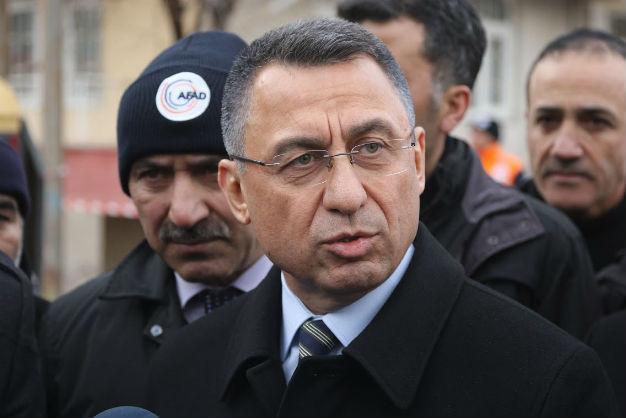Turkey lies on seismic belt: Disaster relief body
ANKARA

DHA photo
Around 92 percent of Turkey’s mainland is on a seismic belt with 95 percent of its population living on it, said Fuat Oktay, head of the Prime Ministry Disaster and Emergency Management Authority (AFAD), in a written message published for the “1-7 March Week of Earthquake.”
“Some 66 percent of our land as well as some 75 percent of the land where big industrial sites are located stand on first and second earthquake zones,” Oktay said, underlining the fact that Turkey is on the Alpine-Himalayan fault line, an earthquake belt known for intense seismic movements.
In his message, Oktay touched upon the programs and education projects being carried out to raise awareness about earthquakes and ways to minimize and even eliminate its damages.
As part of the “Disaster-ready Turkey Education Project” some 5 million people are being educated on fundamental disaster knowledge through modules such as “disaster-ready family,” “disaster-ready school,” “disaster-ready work place” and “disaster-ready youth.”
Oktay also said “National Earthquake Strategy and Action Plan 2023” was Turkey’s first strategic plan put forward for this aim.
Turkey’s parliament (TBMM) has assigned the Prime Ministry Disaster and Emergency Management Authority (AFAD) as the institution authorized to announce earthquake data, as AFAD founded and runs three of Turkey’s four earthquake observation stations.
As part of Earthquake Week, AFAD will hold 440 earthquake drills and evacuations nationwide as well as open 385 awareness booths in city centers, shopping malls and universities, the message said.
On Aug. 17, Turkey will commemorate one of the biggest and deadliest earthquakes, which claimed around 18,000 lives when the Gölcük district of northwestern Kocaeli province was shaken by a 7.5-magnitude earthquake in the early hours of Aug. 17, 1999.
